What Do You Do With A Loved One's Social Media After They Die?
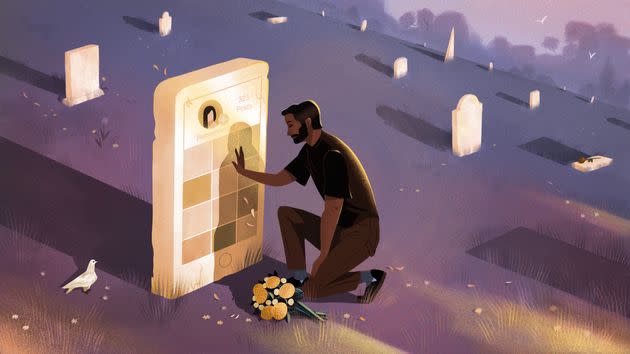
After a loss, having to manage a loved one’s digital legacy is a strange position to be in.
When May Bush lost her husband, Ian, to cancer in July, she was loath to let his Facebook profile just sit without any attention. After all, it had been a thriving page during his life.
The couple had been so busy with work and raising their teen son that they struggled to keep their friends and family in the loop. Facebook gave them a way to keep these people in their lives, through tagged vacation photos and other updates.
After her husband’s death at age 51, Bush wanted to keep his page as active as it had always been.
“My belief was Ian had passed away but the life he helped create through his family lived on, and that meant so did he,” said 49-year-old Bush, who lives in Round Hill, Virginia. “Turning it into a memorialized account” — Facebook’s process of converting a profile into a tribute page — “felt too permanent,” she added.
On his account, Bush has shared wedding pictures to mark their anniversary and updates about their son, Zander. (The latter are especially appreciated by distant in-laws, who may not be as close to Bush as they once were.)
There’s a particularly touchingpost from Bush about how, on her worst days, she likes to imagine her husband sitting in his favorite place at the beach with Babar, his sheepdog who died in 2011. Maybe Ian’s sitting there waiting for her, she says in the post.
On Ian’s profile, mourning has become collective, with friends and family tagging him in photos and anecdotes from the past.
“People sharing stories has helped a great deal in the mourning process,” Bush told HuffPost. “I loved him and was so proud to have shared my life with him, so it didn’t feel strange to carry on our story.”
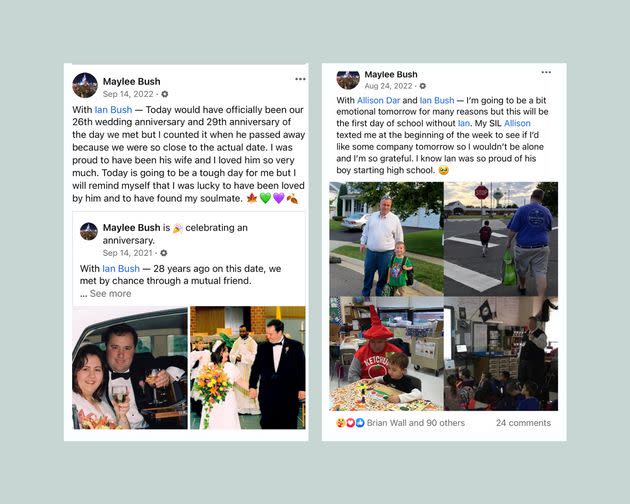
May Bush keeps her late husband's Facebook page full of updates. “I loved him and was so proud to have shared my life with him, so it didn’t feel strange to carry on our story,” she told HuffPost.
After a loss, having to manage a loved one’s digital legacy is a strange position to be in. Bush knew just what she wanted to do, but plenty of others find it difficult to weigh the many options: Do you create a memorialized account? Delete the profile? Or just let it be?
“Managing a loved one’s virtual belongings is as complicated and layered as going through their closet full of clothes or keepsakes,” said Vivian Nunez, the host of the wellness podcast “Happy To Be Here” and creator of Too Damn Young, an online community and resource site for grieving young adults.
Unfortunately, there’s usually a sense of urgency in deciding what to do. Obituaries still exist, but if you want to quickly get the message out that your loved one has died, posting about it on social media is probably the most efficient choice.
“You suddenly become both a community manager and an affected loved one, which is hard to navigate,” Nunez said. “But you may need to be in the right head space to make a decision.”
Since no one gets a guidebook on grief or end-of-life decisions, Nunez reminds mourners she speaks with to cut themselves some slack — it’s a stressful, somber situation, and they’re no doubt doing the best they can do.
Still, it can help to know what your options are online, for when you’re ready to address social media. Here’s a list of some of them, and what others have done to keep a loved one’s memory alive in creative ways:

Facebook allows people to appoint a "legacy contact" to look after their profile posthumously.
This Is What Different Social Media Sites Let You Do
Facebook allows people ― or at least people who really think ahead ― to appoint a “legacy contact” to look after their memorialized profile posthumously. That elected person won’t be able to read old messages, but they will be able to make profile and cover photo changes, post updates, share a pinned comment announcing a death and accept friend requests.
If there is no legacy contact assigned, the page can still be turned into a memorial with a request to Facebook, but there will be nobody managing it.
Facebook also allows a loved one to delete the profile of someone who’s died, with a valid death certificate or other proof of the person’s passing. Keep in mind that if you choose to delete the account, then all the comments, photos, videos and anything else they posted will be deleted with it.
Others choose to let their family members’ accounts just be. (A warning about this option: Facebook will still prompt users to wish the person a happy birthday, so expect to read awkward posts from distant friends who don’t know your loved one has died.)
Some instead create private groups where friends and family can share their memories and collectively celebrate the deceased person’s birthday in the years to come. (As someone who’s part of one of these, it’s incredible to witness my late friend’s legacy continue on in the group; seeing his wide web of friends post photos and memories three years after his death is a testament to what a vivacious, friendly force he was in life.)
Let’s move on to Instagram. Like Facebook, the app allows immediate family members to request that an account be removed or memorialized.
Once the request for a memorialized page has gone through, the account will bear a “remembering” banner and will be frozen — in other words, no new posts, “likes,” tags or comments.
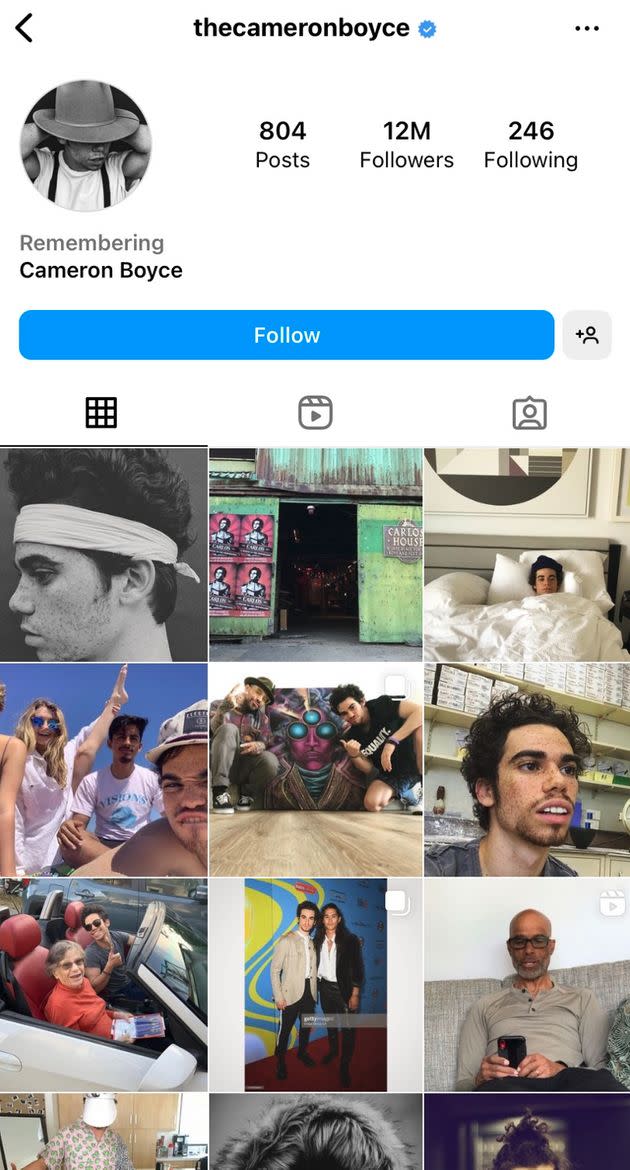
A "remembering" banner appears across a memorialized Instagram account for Disney Channel star Cameron Boyce after his death in 2019.
As for Twitter, unless you have login information, you won’t be able to access a deceased person’s account at all. If you’re an immediate family member or authorized to act through the person’s estate, you can request to shut down the account, with proper identification documents.
On the subject of Twitter and the afterlife, CEO Elon Musk took some heat in December when he announced that the company would “soon start freeing the name space of 1.5 billion [inactive] accounts.” That would likely include the accounts of dead people, which didn’t sit well with many. (As one peeved Twitter user responded, “Delete my dead mother’s twitter account and I will find you.”)
How To Decide
There’s so much bureaucracy to attend to after a death that social media may be the last thing on your mind. Be gentle with yourself and let the process take as long as you need it to, advised Poppy Mardall, a funeral director and the founder of Poppy’s, a funeral business in London.
“You need time to process the reality of what has happened. But the endless requirements to register the death, close accounts and, indeed, deal with social media can feel like an emotional battering — saying over and over again, ‘She is dead, she is dead, she is dead,’” Mardall told HuffPost.
When you are ready to make a decision, let yourself be guided by the values ― and social media use ― of the person who has died, Mardall said.
Did they live their life loudly online, posting about new jobs and sharing birthday posts for all their friends? In that case, maybe they’d like a memorialized page or even a private Facebook group to celebrate their memory. Were they a begrudging social media user? Maybe a big to-do isn’t the way to go.

Let yourself be guided by the values ― and social media use ― of the person who has died, said funeral director Poppy Mardall.
What Others Have Chosen To Do
In May 2019, Tyra Chevonne lost brother Tory L. Height II, an 18-year-old high school student and soldier in the Indiana National Guard, in a shooting.
Chevonne told HuffPost that there was never any doubt that the family wanted to keep Tory’s social media pages going.
“It’s brought comfort to friends, family, past teachers, co-workers, ex-partners and even strangers to see that we’re still posting our memories of Tory,” Chevonne said. “Our mourning keeps him alive.”
On his Instagram and Facebook pages, Chevonne and her family share silly Snapchat filter videos of Tory, baby pics, and stories of a proud Tory returning home absolutely beaming after basic training.
“[His accounts] take people through a timeline of us and the future we lost,” said Chevonne, who lives on the South Side of Chicago. “I wanted to share parts of my brother that others hadn’t seen before. I wanted people to be able to see him in his wholeness although they would no longer be able to experience him themselves.”
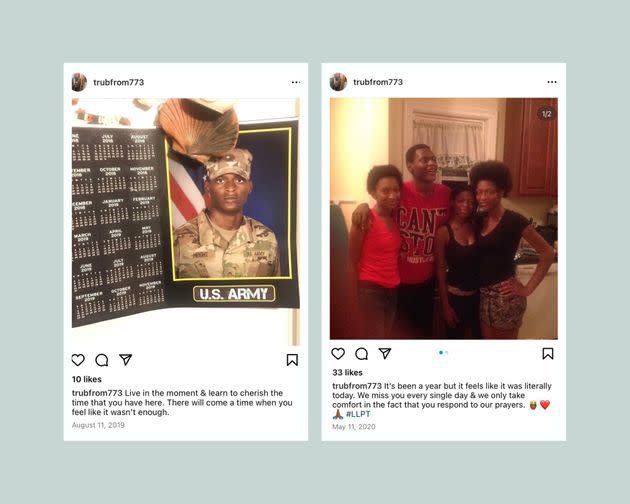
After Tyra Chevonne's brother Tory died at 18, she and her family knew they wanted to keep his social media profiles active. “Our mourning keeps him alive," she said.
When Pamela Addison lost husband Martin to COVID-19 in April 2020, she decided to keep hisFacebook account active for a few months. After that, she set it to a memorialized page.
From time to time, friends will share posts reminiscing about Martin, and those who are fellow Premier League soccer fans will sometimes post a score if Liverpool ― Martin’s favorite team ― beats their own preferred teams. Addison gets a kick out if it. It makes her feel like she’s not the only one determined to keep his spirit alive.
When he died, Martin left behind a 2-year-old daughter and an infant son, so his Facebook page serves as an important digital imprint ― something that his kids can visit to get a fuller sense of who their dad was in life.
“They can look at his old posts and see how much he loved posting about them,” Addison said. “They’ll see just how much he loved them and how proud he was to be their papa. They can also see his other, earlier posts and get a sense of his goofy personality and some of his likes and loves ― soccer, football, music.”
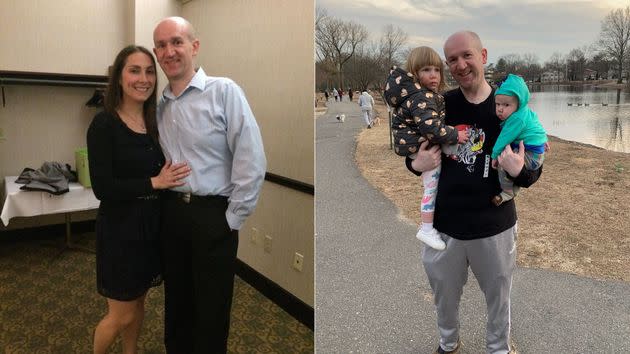
When Pamela Addison lost husband Martin to COVID-19, she decided to keep his Facebook profile active for a few months before setting it to a memorialized page.
Camille Jamerson’s mom, Darlene Stephens, was pretty active on Facebook in her later years. When Stephens died in August 2021, the family said turning her page into a memorialized account gave them a way to exercise a little control over her memory, while still allowing people to share their thoughts about her and to “see” her online.
“She also had so many pictures on her page that we wanted to still see and perhaps one day download and keep,” Jamerson told HuffPost. “And my siblings and I had this unspoken fear that people would forget her if we delete her digital footprint. We know better now, but at the time, that fear was palpable.”
To Facebook’s credit, Jamerson said the process was simplified and easy: It requested an obituary or a link to an online obituary via the funeral home, and the memorialized page was set up within days.
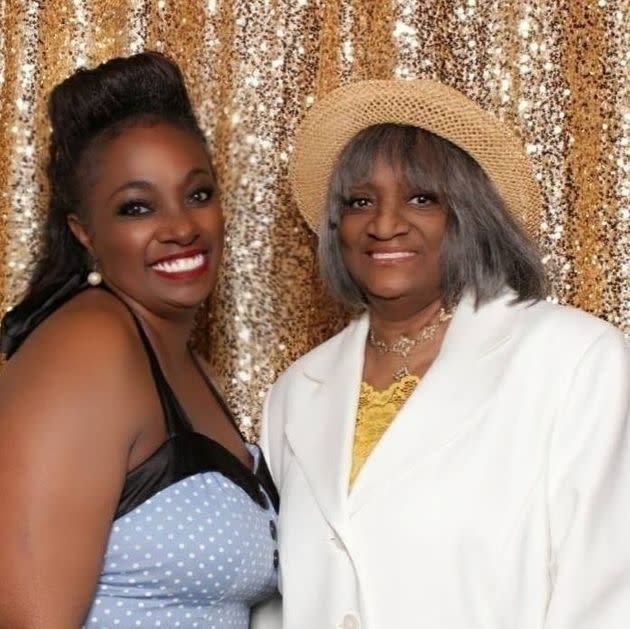
Camille Jamerson and her late mom, Darlene Stephens. After Stephens died, Jamerson and her siblings turned their mom's account into a memorial.
Jamerson, who’s from southeastern Michigan, acknowledges that the existence of the page is bittersweet ― sometimes it’s hard to see the “In Remembrance” language on the account.
“It [is a] reminder that she is but a memory now and won’t respond to us in her fun, quirky way ever again,” Jamerson said. “But it was still the right decision for us.”
That speaks to the advice Jamerson would give others who are dealing with a loss: There are many avenues you can take, but choose the one that feels right for you and your family, and decide in your own time.
“You don’t have to make the decision right away,” she said. “We didn’t do it until months later, when we came out of the fog of grief.”
Whether you memorialize an account or delete it, “ultimately nothing changes about the death of your loved one,” Jamerson said. “In the end, you have to do what’s best for those that remain.”
